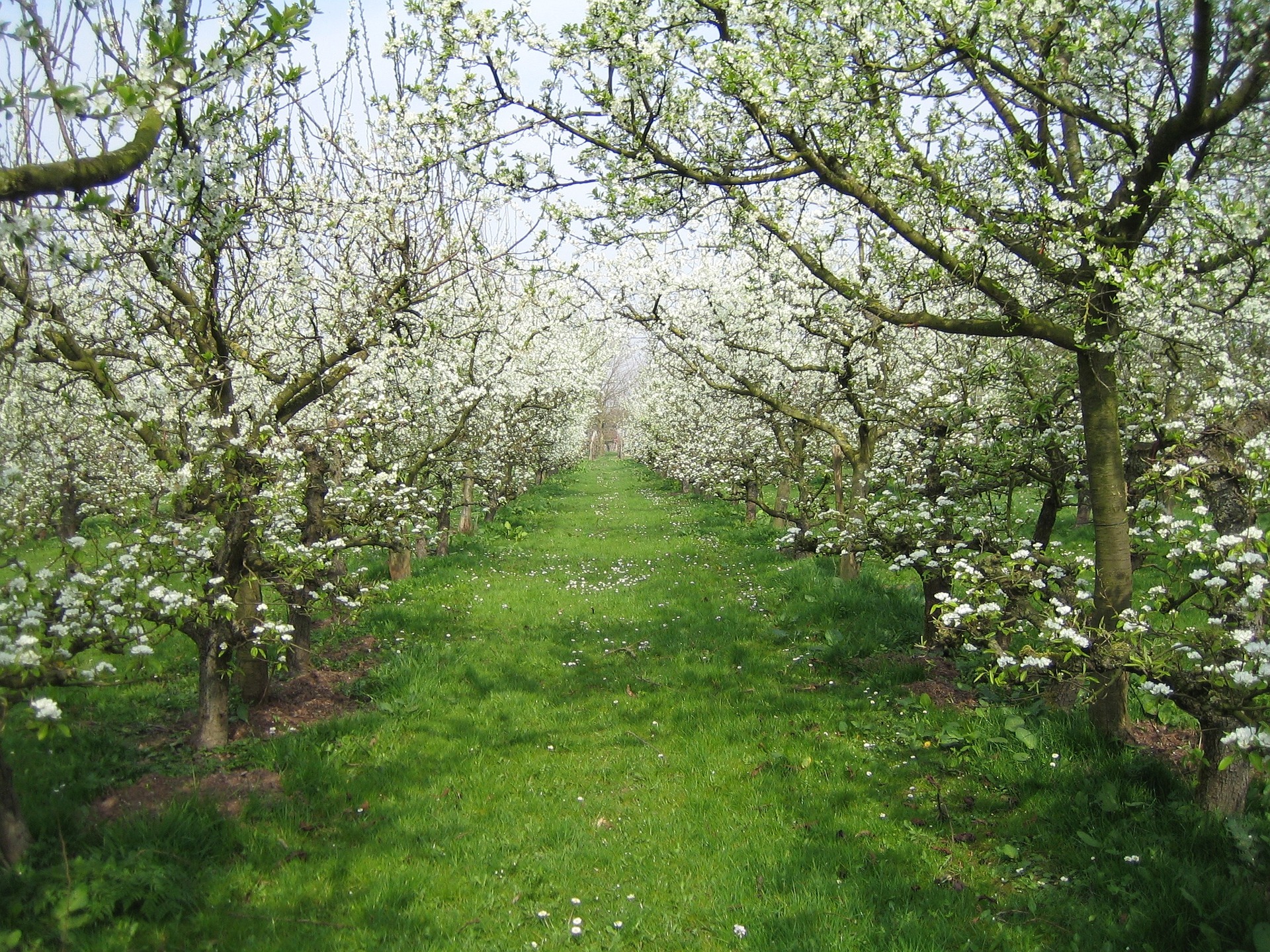When we planted our first trees in 2016 we had no idea of what would work in our area. The orchard site equal distance from Lake Michigan and Grand Traverse Bay on the Leelanau Peninsula, and our hope was that this micro-climate would be more temperate than other areas above 45 Degrees North. We tried many varieties to see what would work best. Displayed below are the apples we raise in the orchard and a little information on each of them.
Roxbury Russet: Discovered in the Town of Roxbury, Massachusetts Bay Colony in mid 1600’s, this is America’s earliest apple cultivar. probably grown from a discarded seed. Grafts were then taken to Connecticut in 1649 and later to the Ohio Valley as the country moved West. Excellent cider apple with good tannin and fairly high sugar – perfect combination. We always put aside a basket for apple pies. Not a bad eating apple, but skin is a little tough, so peel it first.

Kingston Black: A popular cider apple from Kingston St Mary in the Southwest of England, Several authors claim this apple makes an excellent cider by itself. This cultivar grows well in our our northern climate and does not seem prone to fire blight.

Dabinett: You have to love an apple that was found purely by accident. A man named, yes, Dabinett, found this tree growing as a wilding, from a seed, in a hedgerow in Southwest of England in the early 1900’s. An excellent discovery as several cideries now make a single varietal cider with Dabinett. The fruit is small, and it has excellent aromas in a finished cider. We really like this tree. It forms a very straight bolt and grows vigorously. Likely a cousin of Chisel Jersey

Golden Russet: Another American cultivar, originating in Upstate New York in the early 1800’s. Flavor leads some to believe it descended from Ashmead’s Kernel. It’s very good in Mid to Late October for cider, eating or baking, but will turn mealy in Late November. In cider it has an intense juice and its very russeted skin provides decent tannin.

Tremlett’s Bitter: A bittersweet varietal, really only good for hard cider. When ripe the skin shows an attractive red and yellow stripe pattern. This variety is prone to fireblight so we take extra care from the time the tree shows green tip buds all the way through petal fall.

Redfield: Red inside and out, the Redfield is perfect for hard cider with it’s bittersweet pink juice, but it needs to be blended. It was created at by crossing Wolf River apples with Niedwetzkyana at New York’s Geneva Agricultural station in 1938.

Wickson Crab: Developed by crossing two other crab varieties, the Wickson is different because of its high sugar content and the normal crab acidity. The tree is prolific and does not appear to be biennial, producing a bumper crop of golf ball sized apples every year. Wickson has become popular with cider makers; some have tried it as a single varietal cider with great success.

Binet Rouge: Probably the most unusual bittersweet in our orchard. It is not especially sweet or bitter, but has an amazing floral taste and aroma. The tree grows very well with a central leader and very even branching showing a strange self discipline. The flesh is a little dry and the apples grow in bunches requiring hand thinning every year.

Esopus Spitzenburg: Discovered in the settlement of Esopus in New York in the 18th century, this is one of the great American varieties for both fresh eating and cider. Very complex flavors and aroma, with an excellent juicy dense flesh. Several cideries now use it for a single varietal cider with excellent results.

Ashmead’s Kernel: An English variety likely from the 1700’s. It is a crossover-good for eating, baking and very good for juice with its bittersweet flavors. The apple is greenish yellow and russeted and a little ugly perhaps. But close your eyes because the first bite or sip is extraordinairy.

Cortland: Big, deep red, juicy and sweet. A lot of people like it as a sauce apple, for good reason. We like it for its soft tannins in the skin, its sweetness and the amount of juice the apple produces, perfect as a blending apple with some of the more astringent bittersweets in our orchard.

Other varieties in smaller quantities include Bramley’s Seedling, Northern Spy, Ashtons Bitter, Frequin Rouge, Brown Snout, Harrisons and Harry Masters Jersey.
Coming soon: We planted Yarlington Mill and Chisel Jersey in recent years. They should start producing in 2026 -2028.
